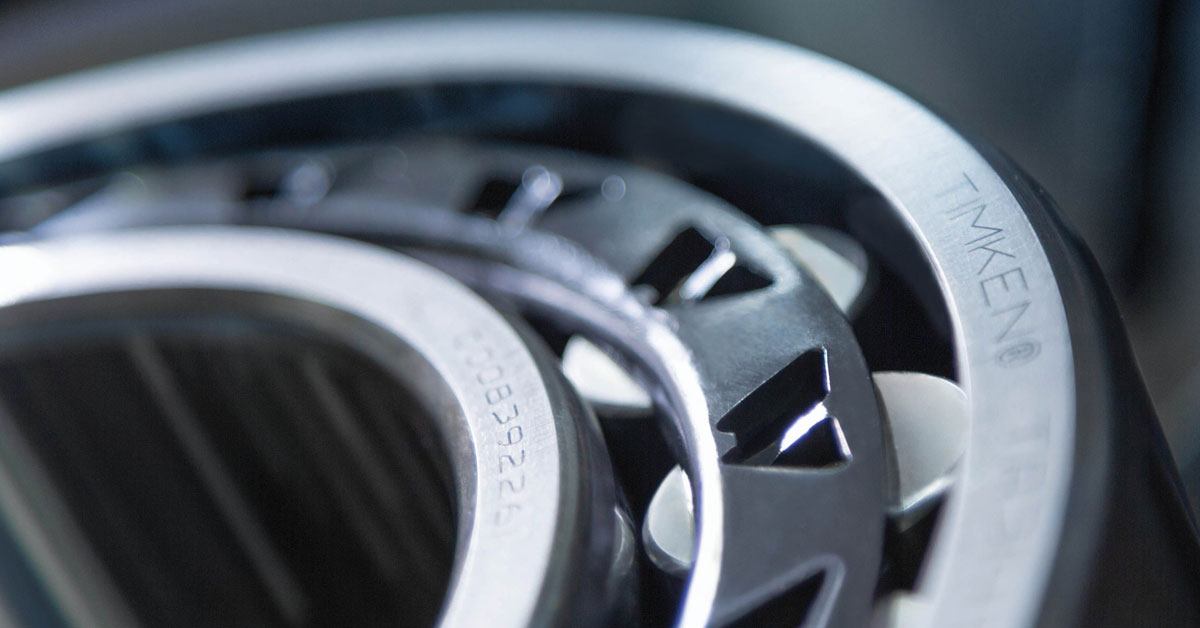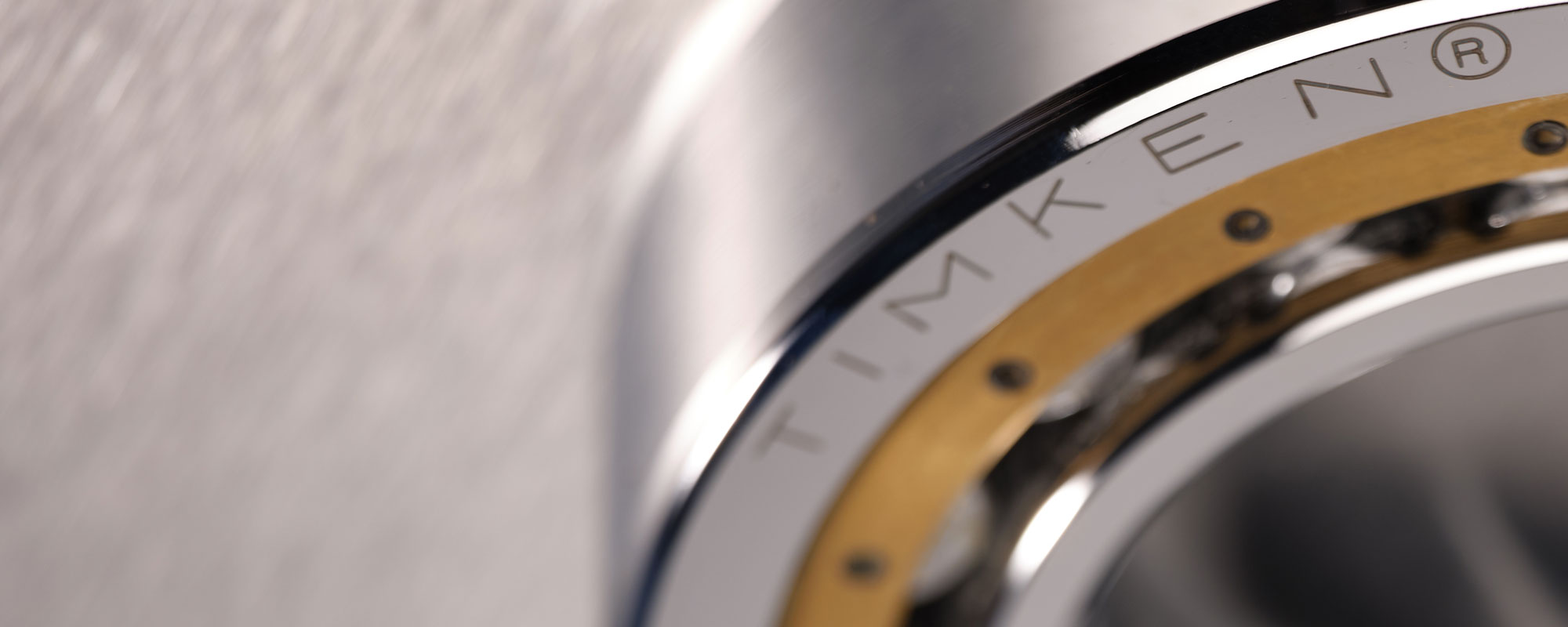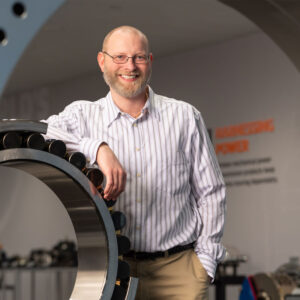Leadership
Tribology: The Science Behind Everything We Do
Bearings are used to reduce friction. When the rollers “bear” the load, the wheels and gears they support rotate smoothly and easily.
Long before “sustainability” became a global focus, bearings played a central role in improving energy efficiency and mechanical longevity by reducing the environmental impact of rotating machinery.
The science of reducing friction is part of a broad field called “tribology,” and Timken’s tribology experts continue to reduce friction and advance bearing efficiency. Their research helps ensure Timken® bearings deliver optimal performance as customer requirements shift and change.
Dr. Carl Hager talks about the evolution of tribology in the bearing industry and explains why Timken is recognized globally as a leader on the subject.
What role does tribology play at Timken?
Hager: “Tribology” as a term didn’t exist when Henry Timken formed the company in 1899, but he patented a tapered roller bearing to solve the problem of friction. Friction is a phenomenon that impedes motion. A simple example is the resistance you feel when two surfaces rub against each other. In fact, the word “tribology” comes from the Greek root tribos, “to rub.”
Here’s a tribology problem: A gearbox shaft needs to transmit load to the housing and rotate. For it to rotate efficiently, we have to minimize friction between the shaft and the housing. We can lubricate the contacts, but we also have to consider the potential for damage between surfaces. How do we minimize damage, while facilitating efficient motion? That problem is at the root of everything we do.
What’s your approach to solving tribology problems?
Hager: Wear analysis is basic to tribology. The ASM Handbook defines wear as “damage to a solid surface, generally involving progressive loss of material.” Abrasive, adhesive, and fatigue wear are the most common forms of tribological damage we diagnose.
Abrasive wear is common to industries such as mining and agriculture and can occur when hard particle contaminants enter tribological componentry. Worn surfaces can exhibit a smooth polished morphology or may have deep scratches and grooves.
Adhesive wear is common in high speed or minimally lubricated interfaces. It can occur when contacting surfaces locally bond and then are pulled apart or sheared. This causes material to transfer as it is removed from one surface and adhered to the other.
Severe fatigue wear, or spalling, often indicates the end of useful life for rolling element bearings. The damage occurs as heavily loaded rolling contacts are subjected to high cycle fatigue. Mild fatigue wear, also called peeling or micropitting, can occur when rolling element surfaces are not properly separated by a lubricant film. The contacting surfaces exhibit extremely high pressures within the features of the surface texture, which can crack and flake at a micrometer scaled depth.

Tribology is at the core of Timken’s extensive portfolio of products and services. Managing friction and wear within components and systems is the foundation of their value proposition to customers.
Bearings transmit load and reduce friction — power loss — in machines.
Roller chains flex and run with minimal wear within the chain or the sprockets.
Belts utilize friction while minimizing wear to maintain proper tension.
Gear drives should have high transmission efficiency with minimal wear.
Automatic lubrication systems manage the lubrication of machine components, without human intervention. Proper lubricant selection can minimize friction and wear.
How has Timken’s tribology approach changed over the decades?
Hager: Timken started making rolling element bearings before modern oil film thickness calculations were available. It was the 1920’s when researchers started to connect the impact of lubricant film thickness, surface roughness, and component rolling contact fatigue life. This impact was amplified in the 1960’s when Timken made a push towards cleaner steel. Without subsurface material defects, the tribological interfaces began to dominate rolling element bearing life.
Today we have modern tools that can model rolling element bearings. These tools can calculate contact pressures and predict the formation of very thin lubricant films. This knowledge can be used to design and manufacture the proper contour and roughness on rolling element bearing surfaces.
What kinds of customer problems do you solve?
Hager: Timken has a world-class tribology lab that we can leverage to simulate many different types of tribological contacts. We use the knowledge from testing and analysis to mitigate problems before products launch. We help develop engineered surfaces and coatings that eventually become customer solutions.
In addition to proactive research and development, we interact with customers and provide damage analysis. We identify the type of wear they’re dealing with to help find a solution. We also work with our rheology lab to help customers choose the right lubricant for their system.
What makes Timken a tribology leader?
Hager: We work with a variety of rolling element bearings for many different industries. In the past two decades, we’ve expanded our product lines to include power transmission components beyond bearings.
Our lab now studies tribology over a broad range of topics. We can measure the thickness of very thin lubricant films. We study friction and wear of solid lubricants and coatings. We evaluate intermetallic wear of different steels and microstructures. We test elastomers for belt material development, and polymers for our corrosion-resistant Poly-Round® housed units.
All the knowledge we gain from this diverse experience gives us a tremendous advantage when it’s time to solve the next complex tribology problem. That’s why so many companies around the world come to us.
Doug Smith, vice president of technology, talks about how Timken is expanding customer options, building on more than a century of TRB excellence. Watch the video.
Learn about the macrotrends driving Timken R&D investments.
Last Updated: 2022/08/14
Published: 2022/06/14

